(Lachlan Morton and his full self-supported setup, credit: Grubers)
By now you’ve undoubtedly heard of Team EF Education First’s Lachlan Morton’s so-called ‘Alt Tour’. In short, he’s solo riding not just the entire Tour de France route, but also all of the ‘transfers’. Meaning, each night when a normal Tour de France rider ends their day at the finish they normally jump on the team bus and drive a few hours (or a lot of hours, or in one case, a plane flight across the country). Instead, Lachlan’s riding all of that – solo, unassisted. Even more, unlike teams that can follow highly direct highways for those transfers (and even parts of the TdF route), Lachlan can’t. He’s got to take less direct side roads.
And, as incredibly impressive as all that is, it’s been well covered in other media outlets. Instead, I’m here to talk about the live tracker system that he has. Because, if there’s anything I do well around here, it’s talking about live tracking of pro cycling events.
In Lachlan’s case, the goal of his suffering is to raise money to donate bikes to World Bicycle Relief. As of this moment, he’s raised £146,094 – covering 1,217 bikes – and we’re only on day 4.
Ok, so let’s talk about Lachlan Morton’s tracking site. First, if you haven’t seen it by now, you can head there. It’s updated 24×7, at 60-second intervals. It’s certainly worth noting undoubtedly a big part of doing something like this is media attention for sponsors. In this case, EF’s sponsors being EF (Education First), and Rapha. And you’ll see that in the site itself, which is skinned to match the branding of the sponsors.
However, under the covers, the site and the tracker are run by a company called ‘Follow My Challenge’. They’ve been around for about 6 years, covering various events and challenges, from one person to 200 people. In their case, the entire solution is pre-canned. Meaning, they supply the tracker, the website, and even will manage maps and overlays. But we’ll get to all that in a second.
The Hardware:
There’s no better place to begin than with the tracker hardware:
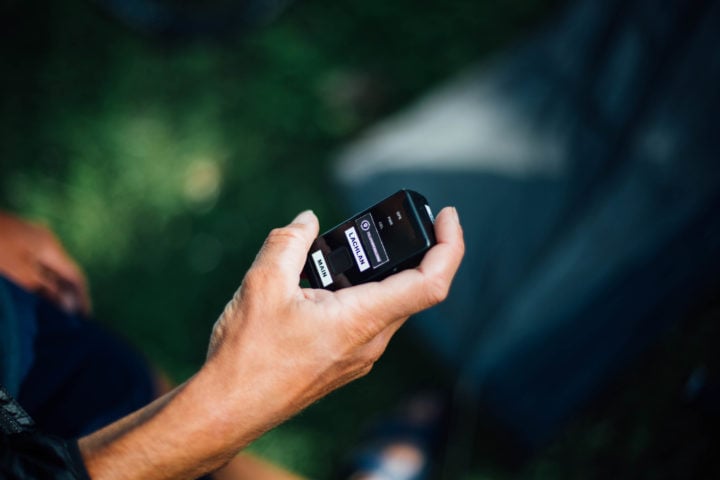
(A close-up of Lachlan holding the tracker, image from Rapha)
You can see it in an image provided by Rapha of the pile of gear he’s carrying with him. Specifically, he stores it in his Rapha + Outdoor Voices Bar Bag. Or, as the rest of us call it – the white bag:
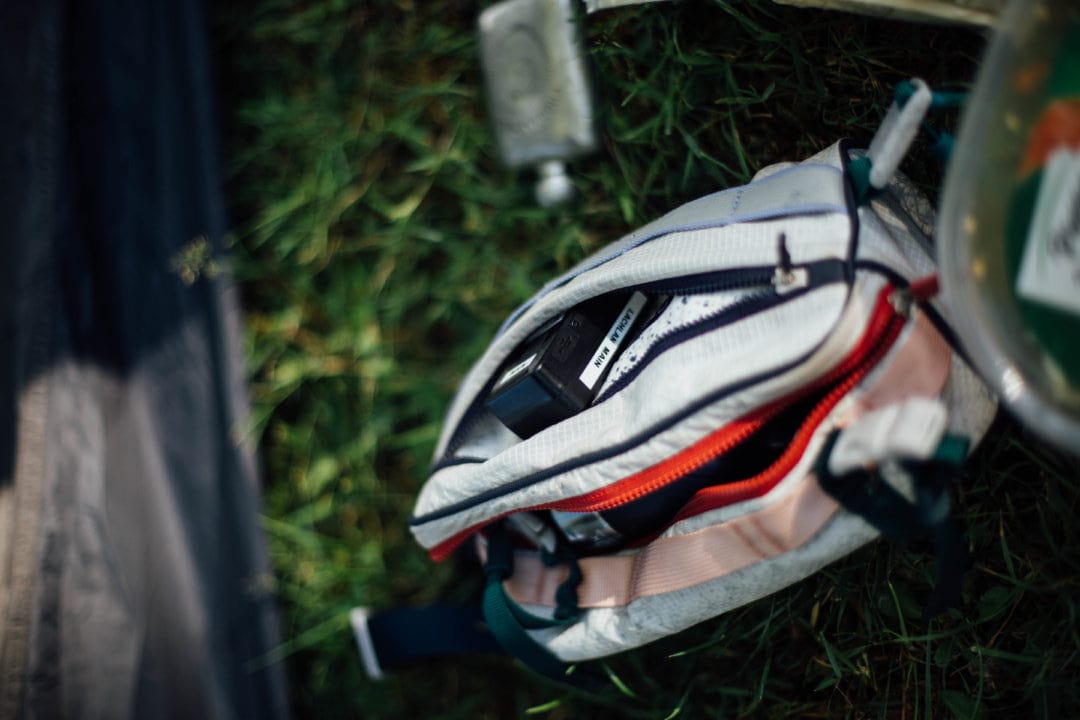
(The tracker in his bag, image from Rapha)
The tracker is technically a Queclink GL300MG, slightly rebranded by Follow My Challenge. You’d rent from them when doing a challenge. Anyone can sign-up to use their service, for one month to more months. You can see here the fee structure, which is pretty reasonable if you’re doing a one-off multi-day event, to have complete live tracking across the board.
The device itself has a battery life of about 6-7 days, depending on the cellular conditions nearby. In talking to the folks behind Follow My Challenge, they said that for wide-open fields with good connectivity, it’ll be on the higher end, whereas for deep mountains, it’ll cut into the battery life a bit (as the tracker compensates by increasing power to the cellular side). The company strongly recommends athletes keep the tracker on 24×7, even when sleeping, as many times exhausted athletes will forget to turn it back on after waking. The device has an accelerometer in it, which will automatically go to sleep when idle.
Lachlan’s team says he charges it every 4 days when power is available. This isn’t the first time he’s used the Follow My Challenge tracker either. He did so during the Badlands too.
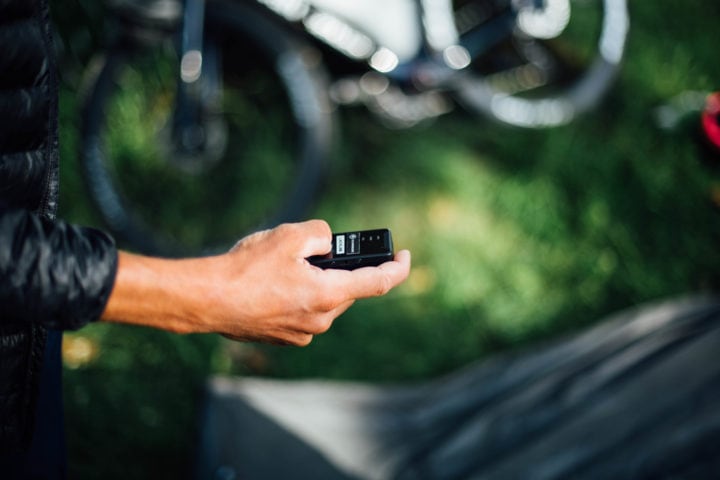
The tracker has a roaming-enabled SIM card in it, so you don’t need to add anything. It’s already covered for anywhere you wander to. The device is primarily on LTE-M (just like Garmin’s new Forerunner 945 LTE GPS watch), but can fall back to 2G if required.
When it comes to the tracking interval, Lachlan’s unit is configured to update at 60-second intervals. For the first day or so, they initially did 5-minute intervals, but then tweaked it down to a 60-second option. That hurts battery life a bit, but not too much. The update interval is for both GPS & cellular connectivity. Meaning, it takes a GPS sample every 60 seconds and uploads it instantly, but doesn’t actually track the GPS in between those points. In fact, if on the tracking site you click on his dot and toggle the ‘show track’ option, you can see how it doesn’t perfectly follow the line, because it’s just connecting those 60-second update dots:
(The grey line was the planned transfer route, and the pink line his actual ride, showing how the 60-second update means it appears he cut chunks, but in reality, he didn’t magically transport across fields/highways/etc, but simply that’s the connected dots.)
In the event he doesn’t have cellular connectivity, the device *will* backfill the every-minute GPS data points. Meaning, it’ll transmit all those un-synced data points back to the map for as long as required.
The Mapping Platform:
Speaking of the map, part of the initial fee you pay for Follow My Challenge is for them to load up your route map into their platform. In some cases, that’s relatively easy. But in other cases, it’s a hot mess. And Lachlan’s route is a good example of that. You see it’s not just one giant route, but rather alternating routes each day showing both the official Tour de France route (in pink), and then the transfer route (in grey). To the viewer it’s semi-seamless, but in reality, it’s pretty complex.
In this case, the route was provided by Lachlan and his team, who did it in concert with VeloViewer. You probably know VeloViewer as the one who provides all but one of the WorldTour teams their maps for the Tour de France and most other major events (notably in their team cars). Or, maybe you know them for their wildly popular Strava plug-in/site. But, Tour teams use them for mapping too. And in this case, VeloViewer in conjunction with EF/Rapha Gone Racing did much of the work primarily on the transfer routes coming up with safe routes for Lachlan to ride.
(Lachlan Morton on Day 2 of his tour, credit: Rapha)
VeloViewer did more than just come up with the initial route in conjunction with Lachlan, they also create the exact routes each day as they shift on a daily basis. Which he in turn rides on his Garmin Edge1030 Plus. For example – if he planned to ride 215KM, but decided to go extra to 255KM, that shifts more than just his progress. It shifts tomorrow’s route files, but it also shifts camping site plans for not only that night but probably the next night. That impacts the Rapha filming crew with him (where they park their vans), and even more interestingly – impacts the planned address he must provide each night to WADA, for anti-doping measures.
Ben Lowe at VeloViewer explained that today, June 29th, “Lachlan is thinking of doing an extra 70km today (to another known campsite), although he will make the choice when he reaches the originally planned stop. If he does that then Kim English [EF/Rapha’s Gone Racing producer] will adjust that riding time for today and will then need to spend a few hours re-planning the campsites for the next few days.”
You can see this on the currently proposed file splits, which are used to generate the GPS files to follow each day. These are also used by the EF/Rapha crew/film members using the standard VeloViewer iPad in-vehicle race tracking/planning system too. Here’s what that looks like in a team car during an event last year. VeloViewer also added in special integration with the Follow My Challenge hardware, so they could see his live position too, on the VeloViewer WorldTour package app.
Speaking of which, as you might have noticed, there’s a dot on the map for ‘The Peloton’. That’s simply another Follow My Challenge tracker in one of the Team EF team cars (as racers aren’t allowed to have unauthorized tracking hardware on them). Given the team cars are usually pretty close to the peloton, it’s an easy solution to showing the race position.
As you can see above, the Follow My Challenge platform shows stats for the rider, which are done by a blend of known track length along with finding the nearest point on the ‘known track’. We can see it above for the Peloton, but also below for Lachlan too:
However, things can get super interesting when the company is doing larger-scale events. And in fact, on their website you can look anytime at any/all published event live. It’s actually pretty darn cool. For example, right now there’s the Transpyrenees 2021, which they’ve got some 160 riders with trackers on them:
Every single rider you can zoom in on, but there’s also a ton of analytics types pages too (way more than just these two screenshots):
It also includes 3D mapping pages, Instagram pages to pull in photos from participants based on hashtags or known/designated accounts, and more. It’s pretty darn impressive.
Meanwhile, while you read this entire post, Lachlan keeps on pedaling along – right now at 24.72KPH, the peloton meanwhile is moving at 50KPH as they approach the stage finish. Still, he’s building up a nice lead on the peloton, helped by some short transfer stages the last few days and a very short individual time trial that’s slated for the Tour tomorrow. Of course, later in the week, he’ll repay that debt with some substantial transfer stages as well as long and straight stages where the peloton can maintain much faster speeds than him.
Still, I’ll be watching his dot just as closely. Because as always, there’s something about watching the steady-moving progress of a little dot that intrigues me.
With that – thanks for reading!
FOUND THIS POST USEFUL? SUPPORT THE SITE!
Hopefully, you found this post useful. The website is really a labor of love, so please consider becoming a DC RAINMAKER Supporter. This gets you an ad-free experience, and access to our (mostly) bi-monthly behind-the-scenes video series of “Shed Talkin’”.
Support DCRainMaker - Shop on Amazon
Otherwise, perhaps consider using the below link if shopping on Amazon. As an Amazon Associate, I earn from qualifying purchases. It doesn’t cost you anything extra, but your purchases help support this website a lot. It could simply be buying toilet paper, or this pizza oven we use and love.

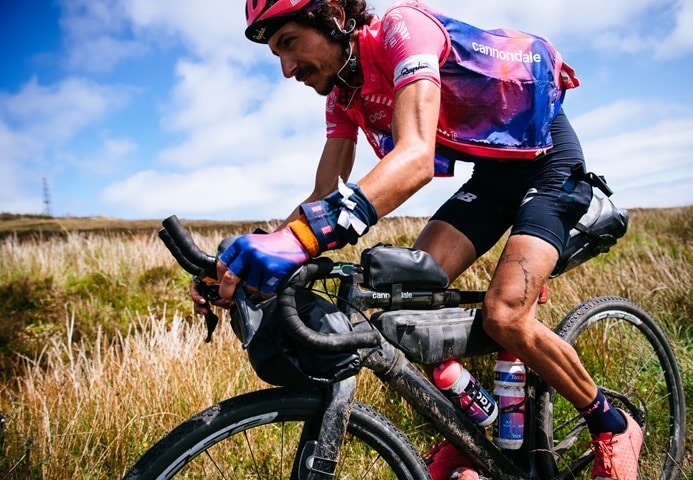



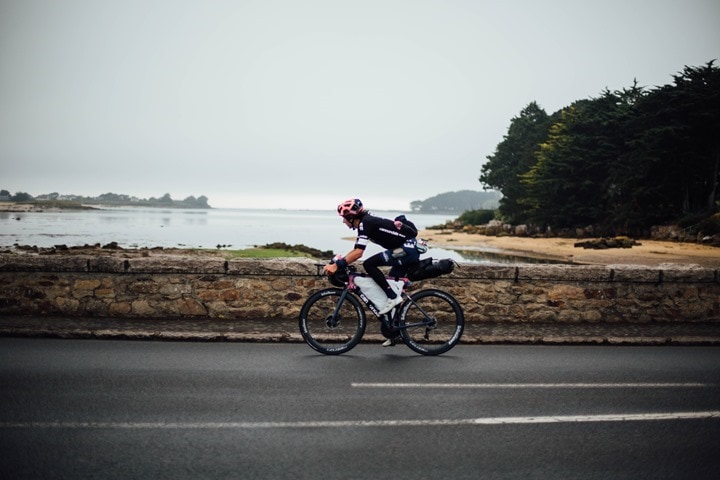





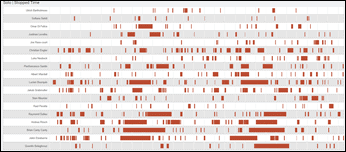





















Amazing!!
Tha ks for the detail on the mapping/tracker etc. I was expecting trackleaders/spot trackers, but this is new to me. Great stuff
However, being a little pedantic, hes not doing this unassisted. Having someone sort out your camping options ahead of you will not only save him time, but will make him so much less stressed and therefore calmer.
On the other hand, he’s racing the tdf peleton!!!
True, though, the only reason someone has to arrange camping sites is because the film crew is with him. Otherwise, he’s just likely camp wherever the heck he wants – more than likely by the side of the road.
And, I suspect the film crew aspects add plenty more stress than not. I’m betting there’s plenty of random b-roll type shots he has to do 12 times over that eat up time. Plus interviews, sit-downs, etc…
> the only reason someone has to arrange camping sites is because the film crew is with him
Sort of. If he’s opportunistically grabbing catnaps, then yes. If he wants to bed down for a few hours, he doesn’t want to do that on top of the Alps. Similarly, he probably doesn’t want to find himself descending an Alpine road in the dark. So finding points that are good to stop and that leave you well-positioned for the next day’s (or even several days’) riding does take some work.
Go little dot!
Tim Moore wrote a great book,French Revolutions, about a similar effort, Tim was not at all a serious biker…amazing
How’s he charging his devices? He has a Garmin and almost certainly a cell phone – they will need charging every day or two. Does he have a hub dynamo? Or is he eating on charging whilst eating in restaurants? Something else?
They said he’s charging a battery pack in cafe’s primarily, and then charges devices from that.
I can’t see a dynamo on the pre ride photos I’ve seen.
Recharging at stops with a battery pack as cover works well – a battery pack can recharge your garmin 5 times.
I don’t know how much night riding he is doing.
Indeed, and being at campsites nightly, many French campsites will have power outlets in shared areas. So throwing a battery pack in a laundry room or such to charge is pretty easy, if one doesn’t spend time at cafes.
I watched yesterday or the day before as he actually waited a while at a little town, to watch the Peloton go by (he had already completed that entire stage, and was on the transfer, which happened to double-back through that town).
If the film crew is with him, wouldn’t he just get power to recharge his devices from them? Plus I have so many battery packs that recharge with solar I could probably run the devices most days just by having a battery pack exposed to the daylight.
A 10,000 mAh battery pack will get you through a week of charges easy, and that’s before considering that the battery in the 1030 plus is massive already (and he’s likely not using his phone much).
When I’ve done ultra long distance stuff I’ve easily been able to keep the battery topped up at rest stops.
There is nothing solo and unassisted about this supported tour. Please, calling it such is just offensive to the many athletes that do partake in solo and unsupported events.
I always find it funny when groups of people like to redefine terms. It happens a lot, especially in endurance sports.
But here’s the thing: He’s riding the Tour de France route solo and unassisted, in comparison to a typical Tour de France rider who is in a peloton and with support vehicles mid-race to sort everything out. That’s literally the English language exact wording of what he’s doing. You might not like that, but that doesn’t change the reality of the situation.
You don’t get to redefine standard words like ‘solo’ to make your own efforts sound more grandeous than someone else’s. If you need to pad that definition, then come up with a longer sentence. Cause frankly, it’s these sorts of comments that do nothing to help the sport.
And get this final tidbit: It (using the term solo and unassisted) doesn’t take away from whatever it is your doing that you’re re-using those same terms to met your fancy. It’s not offensive to those “many athletes”, I’ve yet to hear anyone that’s “offended”. And frankly, if you’re (yourself) actually so easily offended by such a term – I’d seriously question you’re ability to do anything on this scale yourself.
Cheers, and happy Thursday!
Well said Ray.
Because it’s being filmed it’s not unassisted? From what I gather he’s doing his own repairs and camping etc. Besides filming what “support” do you think they are giving him? Obviously if something horrible happened they would help but if they are filming and just filming it’s not a help at all.
Having to tie your tubes in a knot when you get one too many punctures sounds unsupported to me!
I love what Lachlan is doing, and it’s great there are other trackers/ apps to watch dots with.
Races like the Transcontinental, and now many other events are pretty commonplace now (4200k , 14 days, 50,000m climbing through the alps, being chased by Bosnian and Albanian dogs, sleeping in 4 star hotels one night, behind a hay bale the next).
These races have very specific definitions on solo/unassisted to ensure a level playing field
ie it’s just you, on your own. Route planning before you start is totally recommended, but if things change, it’s up to you to sort it out……
Film crews are fine, if they just observe, but even then they provide mental ‘support’ just by being around.
However, Lachlan is not in a race, its his own event so he defines the parameters.
I think its great exposure for bike packing, and also raising money for a good cause.
Film crews are more likely to be a pain in the butt for subject.
And I’m speaking as a photographer/filmmaker.
It is always interesting to see the bike & gear choices made by the endurance riders. Apparently this same rider did a portion of the journey in a pair of Birkenstocks. I hope to ride the Topstone when they are reliably in stock again, but going to do a hard pass on the sandals.
Great write up, Ray!
Can you expand a bit on this part?
> impacts the planned address he must provide each night to WADA, for anti-doping measures
Why would the doping agency care about where he stays for a non-competition event?
Out of competition testing. Presumably he still has races this year. The vampires need to know where to find riders all year round.
Hello everyone, I want to buy a new bike. I’m thinking of taking out a loan for this. Do you think this is a good idea? Where can it be done better?